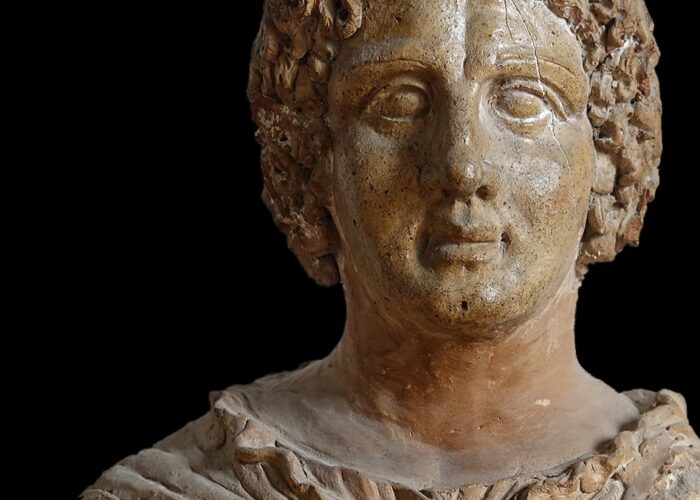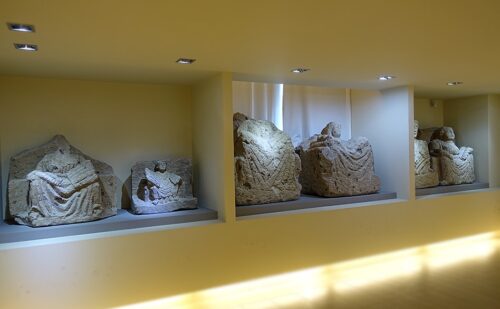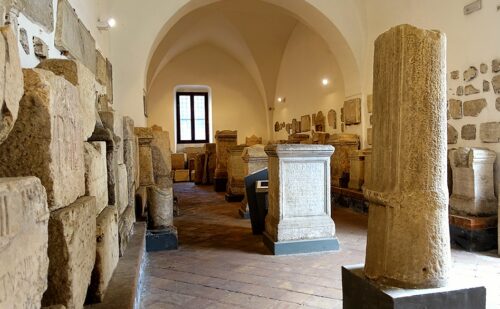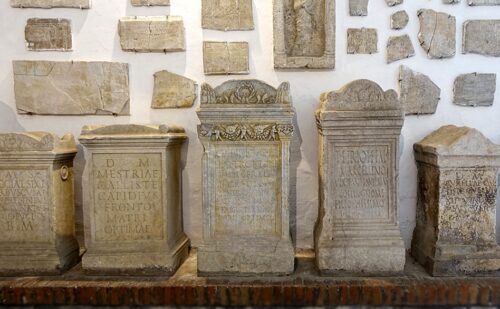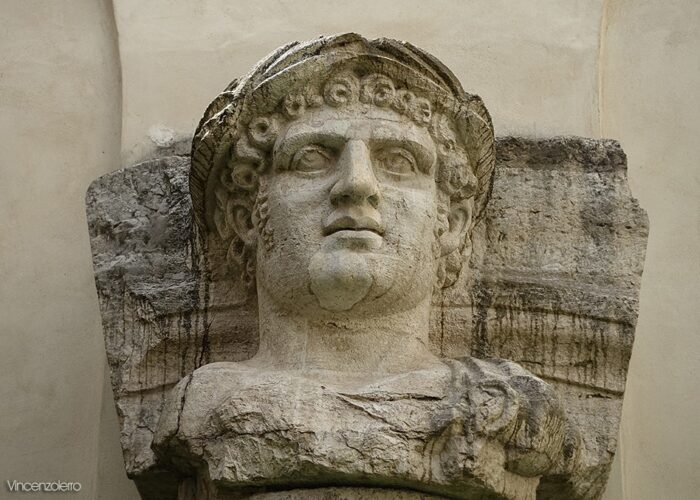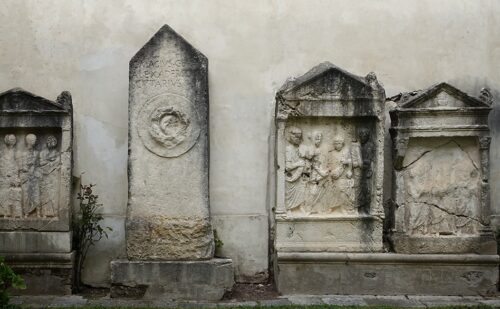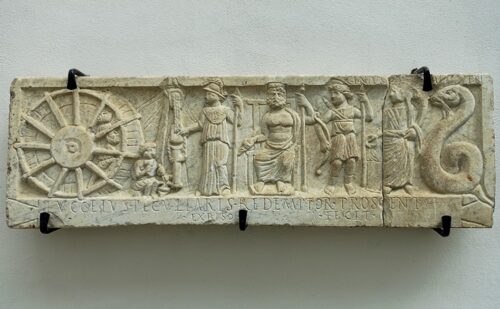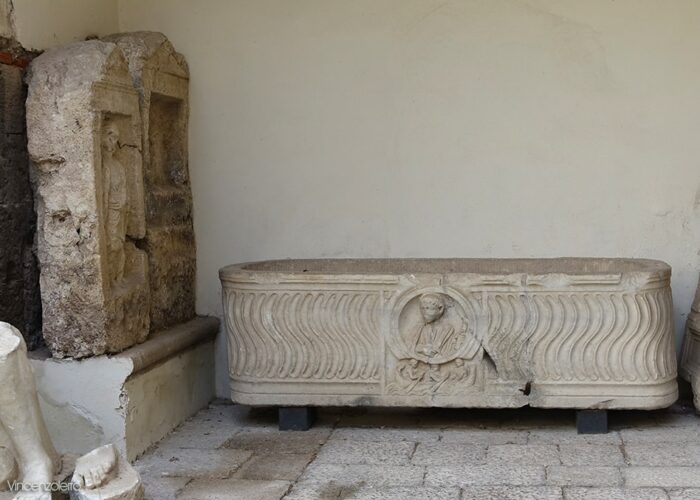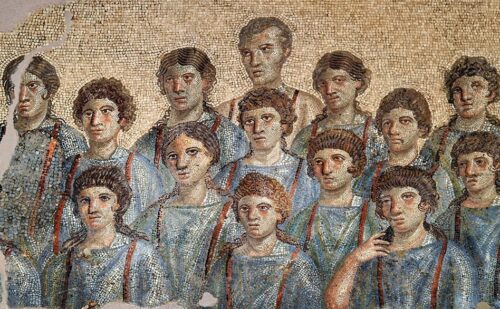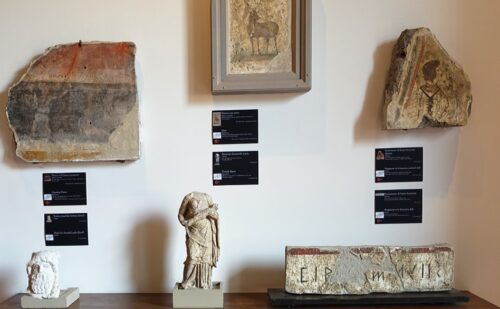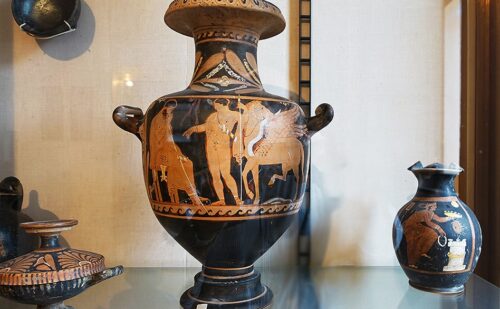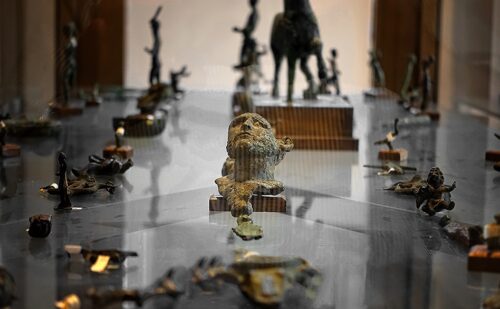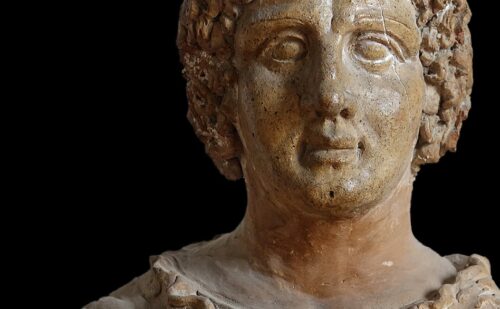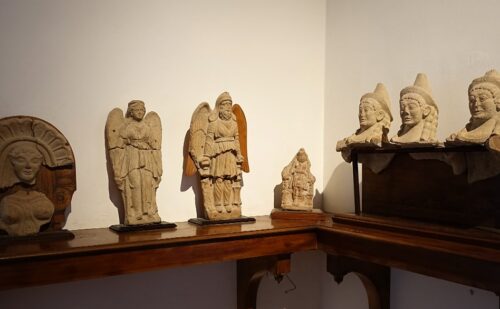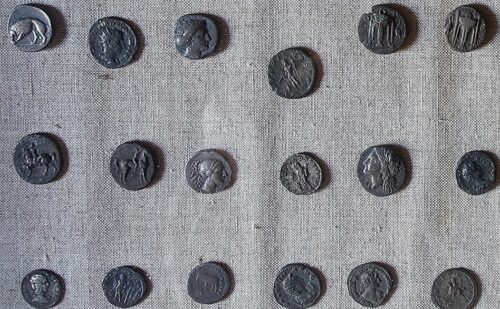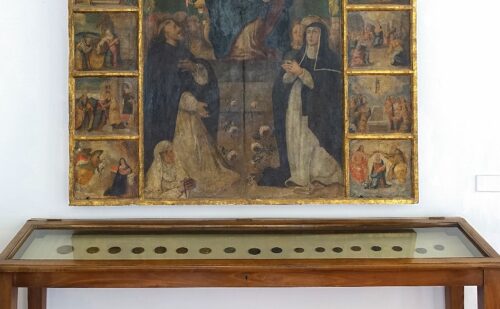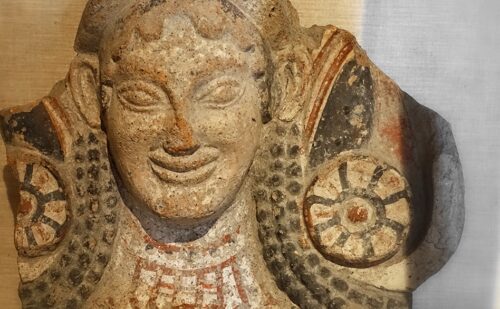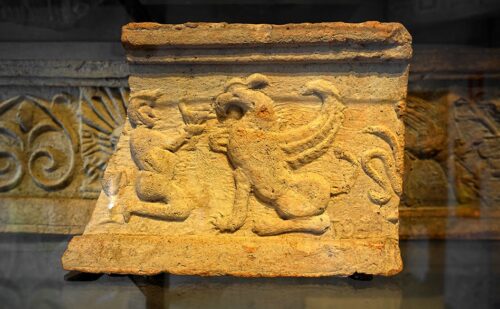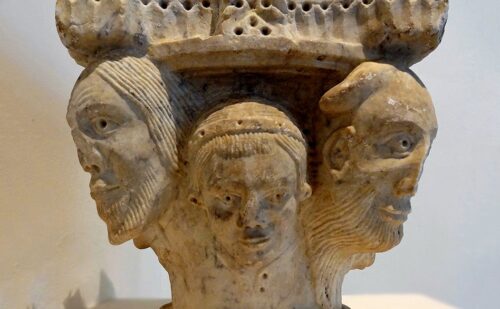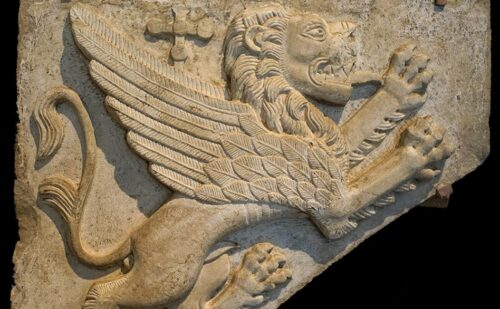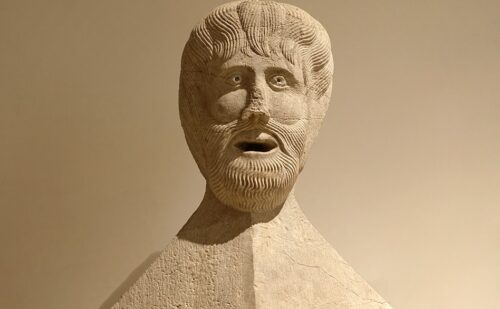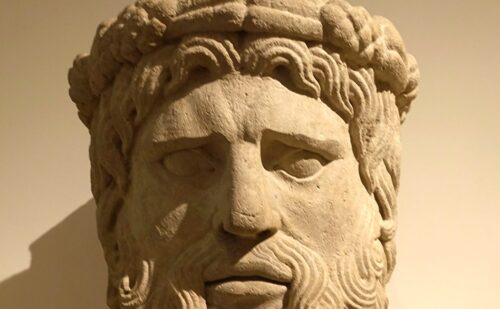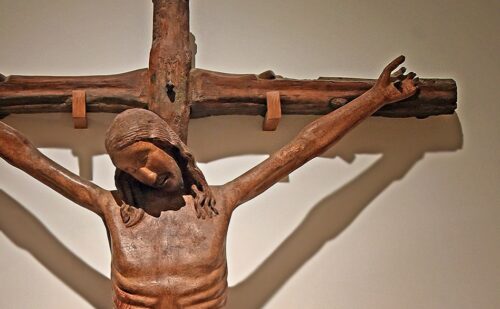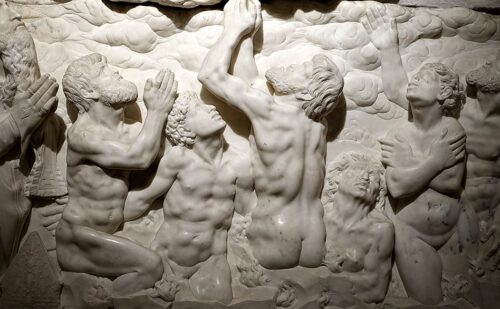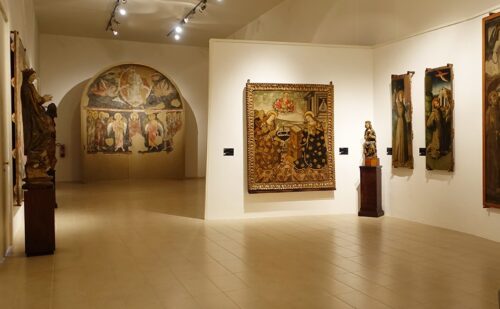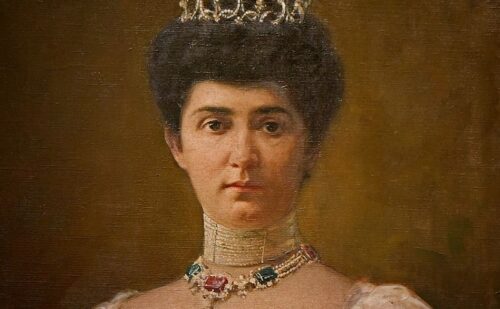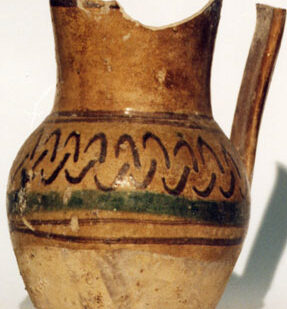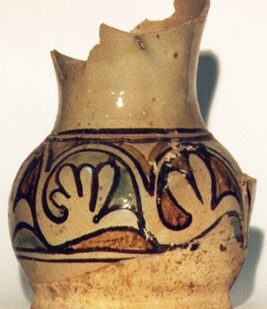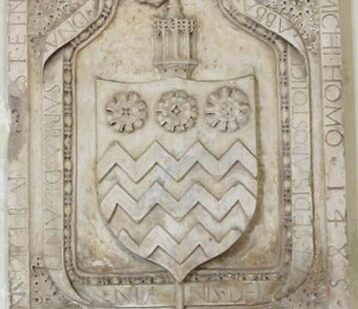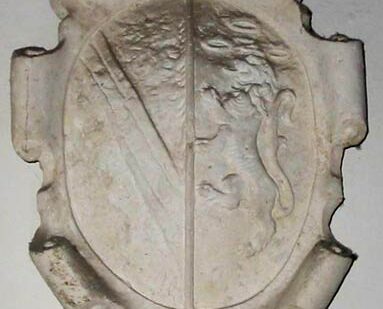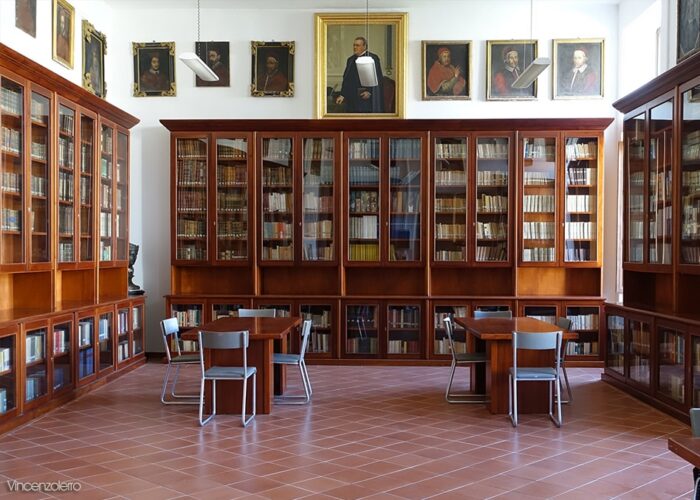The Campano Museum of Capua
The Campano Museum is one of the most important in Southern Italy, with unique collections in the world
The Campano Museum of Capua, founded by canon Gabriele Iannelli in 1870 and inaugurated in 1874. It was defined by Amedeo Maiuri “the most significant of the Italic civilization of Campania”, the region to which Capua gave its name. The Museum is housed in the historic Antignano palace whose foundation dates back to the 9th century and incorporates the vestiges of San Lorenzo ad Crucem, a Lombard age church on the site of one of the three noble seats of the city.
STORIA
In the early years of the Unification of Italy, the need arose to give more concrete forms to the archaeological and artistic systems of the Nation and therefore special Commissions were created.
With the Royal Decree of 21 August 1869, the "Commission for the Conservation of Monuments and Objects of Antiquity and Fine Arts in the Province of Terra di Lavoro was established, which, having ascertained the existence in the Province of a considerable quantity of archaeological and poorly guarded works of art destined for certain destruction, he decided to found a museum.
Capua, illustrious and ancient metropolis of Campania, was chosen as the custodian of the most shining memories of the Region; the monumental and historic Palazzo dei Principi di S. Cipriano, a gift from the Town Hall, was the seat of the Museum; the Provincial Administration of Caserta took on the financing for the management of it.
In 1874 the Museum was opened to the public.
In 1933, due to the considerable increase in the collections, a reorganization of the Museum was made, which was curated by Prof. Amedeo Maiuri, who defined the Campano Museum: "The most significant of the Italic civilization of Campania".
In the variety and vastness of the archaeological, historical, artistic and book heritage that it houses, it is the faithful and eloquent mirror of the three-thousand-year life of a metropolis that has seen Osci, Etruscans, Samnites, Romans, Lombards alternate in its double headquarters from time to time. , Normans, Swabians, Angevins, Aragonese, Spaniards and so on. Its history is linked, among others to the names of Spartaco and Annibale, Pandolfo Capodiferro and Pietro della Vigna, Cesare Borgia and Ettore Fieramosca.
The finds it houses, monuments and documents of incalculable preciousness, have been illustrated in recent centuries by first-rate scholars, and are still the subject of careful investigations by highly skilled cultural figures.
The Museum is housed in the historic Antignano palace whose foundation dates back to the 9th century and incorporates the vestiges of San Lorenzo ad Crucem, a Lombard age church on the site of one of the three noble seats of the city. The building boasts the splendid Durazzo-Catalan portal that bears the coats of arms of the Antignano and d’Alagno family.
On 9 September 1943 a violent aerial bombardment struck Capua, reducing it to a mass of ruins. The Museum followed the fate of many other buildings razed to the ground, fortunately all the collections had been previously secured, and thus could be saved.
The tiring and long reconstruction work begun in 1945 was completed in 1956, when the new rooms reopened to the public.
The Museum is divided into two departments: Archaeological and Medieval with an important library attached; it occupies 32 exhibition rooms, 20 storage rooms, three large courtyards, a vast garden.
Riduci com'era prima
Read more
Collections Index
Archeologia
Dal Medioevo al XIX secolo
La Biblioteca
La Biblioteca del Museo campano è, per il numero dei volumi a stampa e dei manoscritti, pergamene, carte geografiche e stampe che contiene, la più importante di Terra di Lavoro.
ARCHEOLOGY
THE MOTHERS (ROOM V-VI-VII-VIII-IX)
To the left of the courtyard (from the fifth to the ninth room) is the collection of the "Mothers", the most unique and precious of the Campano Museum, among the rarest that Italian and foreign museums can boast. In the year 1845, during an excavation carried out for agricultural work by Mr. Patturelli, in the locality of "Petrara", near the ancient Capua, the remains of a large votive altar with architectural friezes, inscriptions in Oscan language and statues came to light. in tuff. Fortunately, the underground excavation was not continued, especially since the material found was dispersed for speculative purposes. In 1873 and up to 1887 research was carried out for archaeological purposes, obtaining from them abundant material and especially a considerable number of tuff statues almost all reproducing a woman seated with one or more children in her arms, giving the exact proof that it had existed in the place. a temple. This thesis was supported by the fact that among the aforementioned sculptures only one differed from the others for its marked hieratic imprint: instead of holding babies in his arms he had a pomegranate in his right hand and a dove in his left, symbols of fertility and peace, therefore that alone was to represent the tutelary goddess of the temple dedicated to motherhood. The goddess was the "Mater Matuta", an ancient Italic deity of dawn and birth and the "mothers" represented "ex 'voto"; a propitiatory offer and the expression of thanks for the granting of the supreme good of fecundity. In 1930 Amedeo Maiuri drew the attention of scholars to these monuments by writing about them in "Aspects and problems of Campania archeology". From that time on, interest was raised and research on the character and value of exemplary Italic art in the sculptures of Capua was fervent, which reveal both vigor of expression and efficacy of lively realism, giving this popular art a taste of unscrupulous straightforwardness and a content of intense humanity. The "mothers" of the Capua Museum form a unique complex of its kind and a rare document in Campania of pre-imperial sculpture and give the idea of the unity of art that flourished on the soil of ancient Italy with a strong realism character. with a constant tendency to express the character, content and destination of the work more than to privilege its formal stylistic aspects. In fact, they are the most eloquent testimony of the cult with which the ancient Campania honored the mystery of life considering motherhood as a divine gift and enveloping the event of birth with poetic spirituality, considering it a sacred thing, like everything vital that comes out of the bosom of nature. Chronologically, they are located in a period of time that goes from the sixth to the second century. B.C. However, the sixth century. B.C. it cannot be considered the beginning period since some specimens possessed are to be attributed to previous eras, comparing their archaicity to that of prehistoric monuments, such as to be defined as the most naive products of sculpture of all times and all places.
Riduci com'era prima
Read more
MOMMSEN H LAPIDARIUM (ROOM I)
After that of the Archeological Museum of Naples, it is the richest collection of epigraphs from the Campania countryside. The main nucleus is due to the great German archaeologist Theodore Mommsen who cataloged it in 1873 while he was awaiting the compilation of the Corpus Inscriptionum Latinarum. Already in 1844, on his first trip to Italy and our Province, he had noted its great importance because through those works it was possible to reconstruct, and indeed reveal, much of the story of our land. To this was added a large part of the inscriptions found in the excavations of the following years. Among these there are texts in both Oscan and Latin; there are also many Christian and medieval ones. The inscriptions are both sepulchral and commemorative votive. Of great importance is the Miliary of the Appian Way dated by the Emperor Constantine Pius with the subsequent addition of a dedication to Valente Valentiniano. The number below indicates the distance in miles from Rome. It was found in Capua in the place called "Parco dell’Annunziatella".
Riduci com'era prima
Read more
FUNERAL STEMS AND INSCRIPTIONS (COURTYARDS)
In the courtyards, a rich series of funerary steles are preserved along the walls. The “funerary steles”, vertical tombstones which were in large numbers along the communication routes, are in the shape of a shrine with a pediment and with scenes alluding to the life and occupations of the deceased. There are also inscriptions and capitals. Noteworthy is the inscription of the “Colonia Iulia”, one of the most important epigraphic documents both on a historical and artistic level for the ancient Capua; found mutilated in 1726, it was integrated and made famous by the commentary of the great antiquarian philologist and epigraphist Alessio Simmaco Mazzocchi, a famous 18th century archaeologist.
SARCOPHAGES (ROOM III-IV)
In the rooms to the right of the 2nd courtyard figurative sarcophagi from the late Roman period, reliefs and sculptures. Important: the sarcophagus with the "Rape of Proserpina" and the pagan one from the first half of the second century depicting a soul, personified by a robed character. Of significant historical iconographic value, it is divided into three compartments, the one on the left depicts a woman with her shadow and a female herm; in the right one, her husband with her shadow and a male herm. In the central panel the deceased is carved in the act of leaving the door of the "Domus Eternalis". Of particular importance is the marble slab dedicated to "Lucceius pecularis redemptor teatri" which represents in relief the laying of a column for the construction of the proscenium of the Teatro di Capua. Starting from the left you can see a paddle wheel moved by two slaves placed inside it. Between the wheel and the winch, a craftsman chisels a capital. He presides over the work of the Capitoline triad of Capua: Minerva helmeted, Jupiter enthroned and Diana with the bow. The figure on the right, with a cornucopia, is the Genius Theatri. Also worth noting: a cinerary urn on a delicately sculpted column with floral motifs.
Riduci com'era prima
Read more
MOSAICS (ROOM X)
To the right of the entrance, the hall of mosaics:
Note: the polychrome mosaic from S.Angelo in Formis depicting a “sacred choir”; decorative panel of the temple dedicated to Diana Tifatina, located at the foot of Mount Tifata (S. Angelo in Formis), of Campanian art from the Constantinian age, III century. d. C .. To the right of the “sacred choir” a mosaic fragment (8) with the scene of a banquet, I-II cent. d. C .. In the same room: a headless marble bust (9) of a “Venus” of Hellenistic art; a fragment of a fresco (10) depicting the “numenlaci” doe which was said to have been present for a thousand years in the temple of Diana and which at the time of the Roman occupation would have been taken to their camp and sacrificed to Latona, according to the custom of the Romans who used to incorporate the divinities of subjugated peoples into their “pantheon”.
VASES AND BRONZES (ROOM XI-XII-XIII-XV)
The collection of vases is housed in these rooms. The large number of collections of vases in the Campano Museum testifies not only to the remoteness of this peculiar artistic product but also to its evolution – on a stylistic and compositional level – over the centuries from the protohistoric age of the iron civilization decorated with simple engraved lines. to the Etruscan vases of the sixth century BC, from the bucchero vases to the Greek vases of the fifth century. BC, from Italiot vases to those from Campania of the III and II century. B.C. They are arranged in the showcase and on shelves grouped according to the different style characteristics.
VOTIVE earthenwareS (ROOM XVI-XVII-XVIII-XIX)
The terracottas of the Museum of Capua are famous in the world for their significant archaeological interest and for the great variety of types.
They are divided into two groups: the architectural and the votive and figurative.
The votive are the testimony of the fervent religious activity that animated the peoples of Campania in ancient times; they generally had two uses: either they were offered by the faithful in sanctuaries, or they were placed in tombs as funerary items next to the dead. They are precious documents of ancient life, art, religion, customs. In some cases they are the only testimony of certain cults, noting the type of the simulacrum of the divinity or representing characteristic forms of the symbols and attributes that referred to the idol.
In no other site as in Capua have so many inscriptions in the Oscan language been found on tuff or clay pillars called iuvilas (visible on request). Their meaning and destination are varied and multiple. In fact, they refer to sacrifices related to noble cults linked to both births and deaths, with protective value.
Riduci com'era prima
Read more
COINS AND MEDALS (ROOM XX-XXI)
The collection of the Museum is of great interest for historians and archaeologists because it provides extensive documentation on the circulation of money since ancient times in Campania and through its specimens, many of which of singular preciousness testify to the evolution of coinage from its dawn to at the medieval era. For freshness of minting and rarity of issue we mention the coins of Sibari, Taranto, Metaponto, Crotone, Velia, Paestum, Atella and of course Capua. As well as the coins of the Mamertines of Carthage, Syracuse and Egypt which arrived in Italy probably as spoils of war.
The evolution of numismatics is made understandable by a chronological display system, by the rare coins of the colonies of Magna Graecia of the sixth century. B.C. to the silver coins of republican Rome; from Lombard coins from Southern Italy to Bourbon silver from the Kingdom of the Two Sicilies. Among the noteworthy medals are the rare examples from the Renaissance period. The medals of the Popes and those of the Risorgimento are of historical interest. The medal collection, excluding some specimens, is a gift to the Campano Museum of the Garofano-Venosta family.
Riduci com'era prima
Read more
ARCHITECTURAL earthenwares (ROOM XXII-XXIII)
The architectural earthenwares , of which a very large number are dated VI-V century. BC, they performed the function of ornament, mainly for the buildings used for the cult of the various pagan divinities celebrated in Campania.
As for the architectural terracottas, acroteri, antefixes, slabs, tiles, tiles, Capua derived their use from the Greeks who used them for covering the roofs of their buildings, both for decorative and apotropaic purposes, i.e. to keep evil spirits away. and their harmful influences.
Most of these objects were found in the temples of the Mother Goddess and Diana Tifatina. The oldest dates back to the 6th century BC. they represent zoomorphic subjects, such as griffin and horse-headed protomes, rams and horses. Many antefixes have a dedication head, female busts in a prayerful attitude. Some specimens are of particular importance as a goddess, perhaps Juno, among the swans, Heracles fighting with the Nemean lion and Artemis on horseback. There are nimbed or diademed heads, polychrome gorgoneion antefixes from the Archaic period.
Riduci com'era prima
Read more
FROM THE MIDDLE AGES TO THE 19TH CENTURY
ROMANIC MARBLES, CAPITALS, PILLARS (ROOM XXIV-XXV)
FEDERICIAN SCULPTURES (ROOM XXVI)
To make the image of his sovereign majesty Frederick II shine in its most impressive and dazzling form, he had the door of Capua or Arco di Trionfo sul Volturno built between 1234 and 1239. It is considered "probably the jewel of Frederick's art and the most beautiful work of its kind of the time. It had to remember the rupture of the royal authority and facing north towards the Papal State, it was affixed to it as an entrance into its royal and secular Ecclesia.
The project manager was the Capuan architect Niccolò de Cicala. It consisted of two polygonal-based towers connected by massive walls and at the top reserved an apartment (cubiculum) reserved for the Emperor. The facade was decorated with the statue of the emperor "in majesty" with the crown on his head and the globe on the right and above the inscription "Misero I will make sure that I know the desire to change"; to the right and left of the statue of the emperor were the busts of Pietro della Vigna which bore this inscription "Let those who want to live pure enter safely" and that of Taddeo da Sessa accompanied by this wording "the treacherous theme of being banished and thrown into prison".
In the lower part above the vault was a woman who represented the fidelity of Capua and bore the motto on her head: "By command of Caesar I guarantee harmony in the Kingdom". The denomination of "faithful" was always connected to Capua as the bust that stood out on the triumphal arch was called, which is said to have used the imperial eagle instead of the heart, so the most extensive and documented monograph dedicated to it was called by Francesco Granata "Civil history of the faithful city of Capua". And so he was pleased to call it Charles V. In 1557 the Count of Santafiore by order of the Viceroy Duke of Alba had the arch with the towers demolished to give rise to new fortifications and "to be able to play the cannon". The statue of the emperor was mutilated of the head in 1799 at the time of the passage of the French through Capua. and the sculptures, removed from their original place, were placed in a newsstand; as soon as the Museum was founded, they were transported and kept in the deposits.
Six antefixes still remain and are exhibited here, a shelf with the face of a youth, a half figure of a lion, an eagle with the function of a shelf, the shape of a griffin, three capitals and three decorated scrolls as well as the solemn and austere bust of Jupiter or most certainly Silvano.
The door decorations consisted of 16 "antefixes" that adorned the lower octagon of the towers and a series of sculptures set along the walls of the building above the arch joining the two towers. Above all, the relief depicting the enthroned emperor; at his feet a sculpture reproducing a woman's head, allegory of “Capua fidelis”; on its sides the busts of Pier della Vigna logothete and protonotary and of Taddeo da Sessa, great executioner; in the center of the arch, the majestic face of "Zeus" as a "key"; all harmoniously between small columns and capitals of various sizes.
The sculptures of the door of Frederick II are a remarkable testimony of an artistic period that frees itself from the bottlenecks of the classical tradition of the South that is renewed through pure Romanesque forms, a prelude to the greatest Renaissance art.
The sculptures are arranged "respecting the need for an examination from all sides ... the large busts rest on squat squared bases slightly exceeding the line of the eye in order to maintain a necessary perspective angle. The six surviving antefixes ... were arranged on a single corbel, so as to reflect the original sense of decorative continuity ... isolated on the central wall the figure of the Emperor and the lion ".
Frederick's sculptures, together with the tuff sculptures of the "mothers" in the archaeological department, are to be considered the rarest collections in the Museum.
Riduci com'era prima
Read more
AUDITORIUM (ROOM XXIX)
It keeps marble inscriptions and coats of arms of Capuan families.
LONGOBARD, ANGIOINE, ARAGONESI ENROLLMENTS (ROOM XXX)
Lombard, Angevin, Aragonese inscriptions. A fragment of the cymatium of the Badial Cathedra of the century. XI (66); a cap of the Badial Cathedra of the century. XI (67).
MEDIEVAL CERAMICS
At the beginning of the 70s, during the works for the construction of the "Pier della Vigna" Middle School in the Lombard palatial area in the historic center of Capua, a large number of ceramic artefacts of considerable importance and value dating back to the late age were found -medieval.
The clay used chromatically oscillating between light pink and greenish and the ascertained presence in medieval times in Capua of figuli or fossae figulorum, as evidenced by documents dating back to 989 and 1106 authorize us to believe that the specimens present in the Campano Museum are a local product. Several pieces are attributable to a period of time that extends from the end of the 13th to the beginning of the 14th century. They represent amphoras and mugs painted in red bands, mugs and a green monochrome oil lamp. Glazed monochrome yellow, brown, green and red. It is the belief of scholars that these medieval Capua ceramics significantly broaden the cognitive horizon of the classes and types of ceramics in vogue in Campania between the thirteenth and fourteenth centuries.
Riduci com'era prima
Read more
SCULPTURES OF THE XVI, XVII, XVIII CENTURIES (ROOM XXXI)
Note: a baptismal font donated by the Abbess Gemma to the Convent of San Giovanni di Capua; A monument in honor of Tommaso Ruffo made in 1874.
The Library of the Campano Museum
The Library of the Campania Museum is, for the number of printed volumes and manuscripts, parchments, maps and prints it contains, the most important in Terra di Lavoro.
The Museo Campano di Capua was opened to the public in 1874 but in the previous year, at the Universal Exhibition in Vienna, a report on the Museum was read in which for the first time the formation of a public library was announced which, in addition to illustrating in the most complete way, the millenary history of the Campanian civilization would also have fulfilled the function of making its bibliographic heritage accessible to all. Therefore, the main criterion that informed the growth of the collections was to favor the collection of documents, printed or manuscripts, concerning the history of the municipalities of Campania Felix, as well as the works produced by the ingenuity of men born in this land.
Enriched in the course of more than a century by conspicuous and precious donations, the Library of the Campano Museum fully qualifies as the most important in the Province and one of the most notable in the south.
Equipped with a bibliographic contingent of over 70,000 units (including parchments, volumes, brochures, manuscripts, magazines, prints, geographical maps, etc.), it covers the entire range of typographic art from its origins with copies of the highest quality.
Riduci com'era prima
Read more
